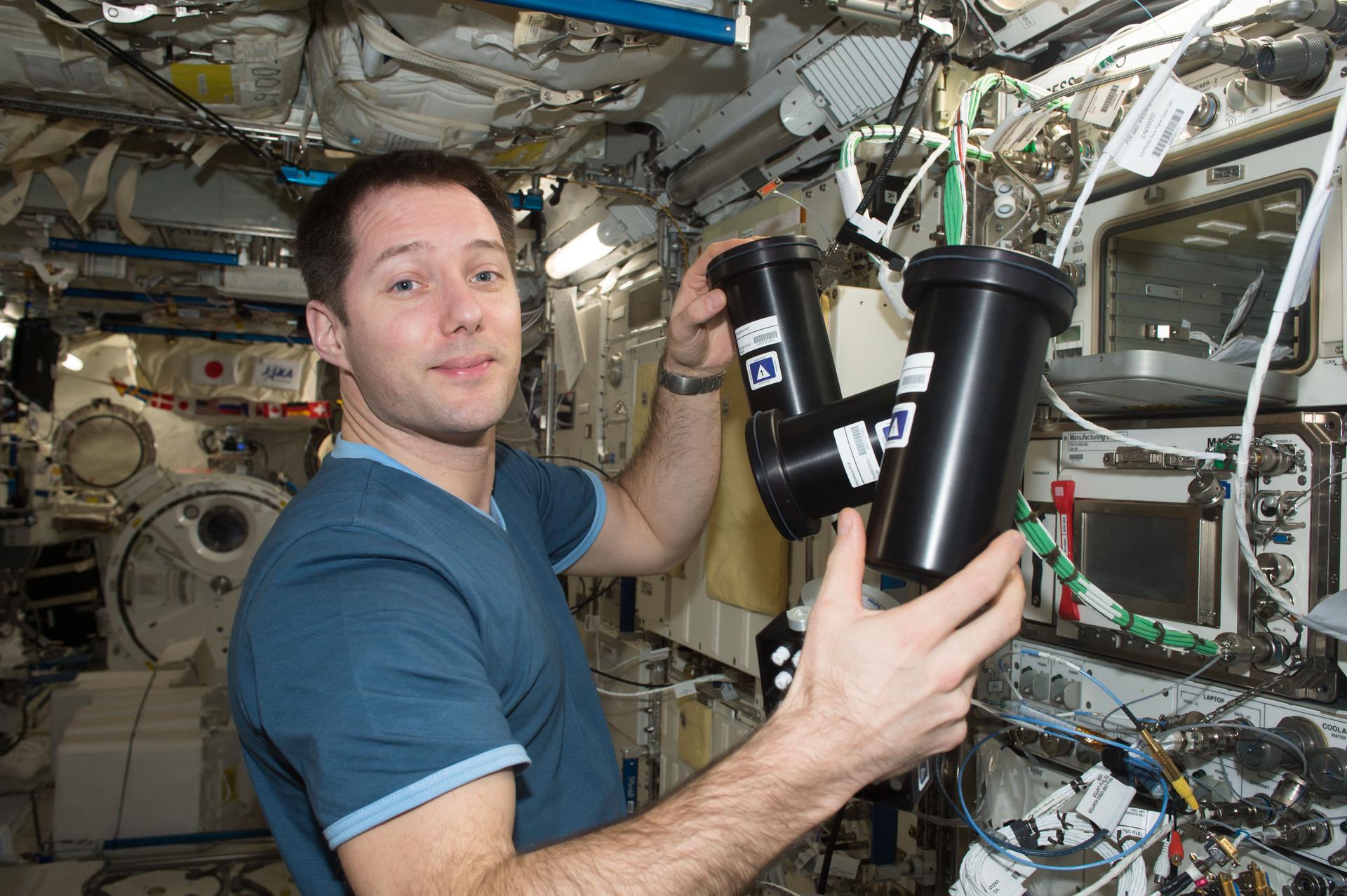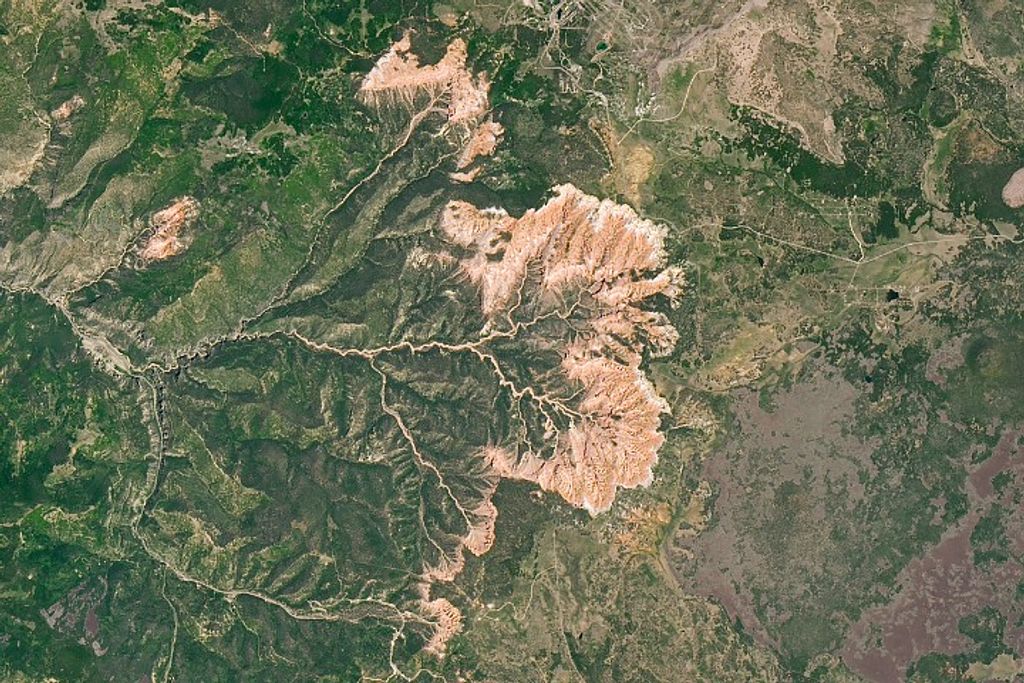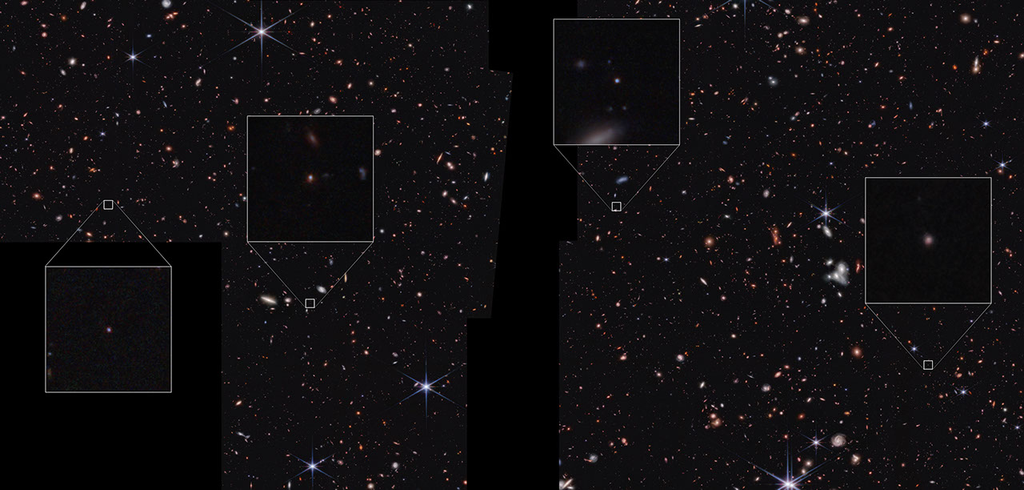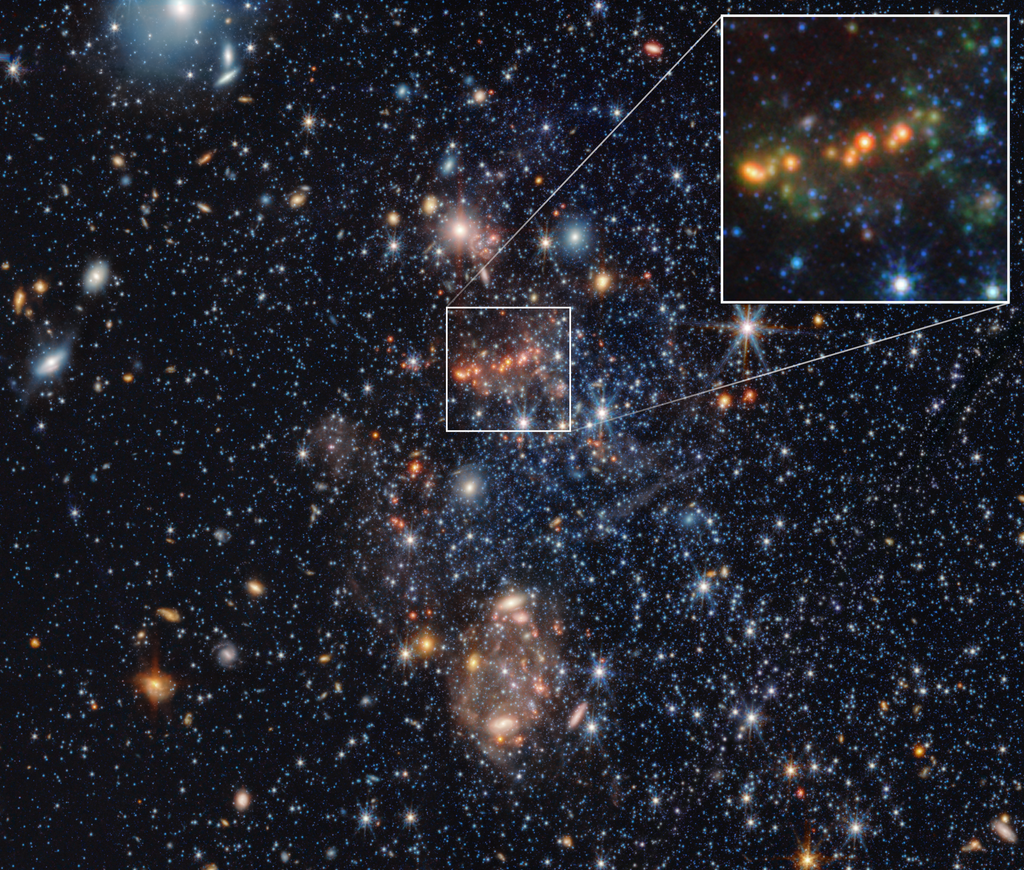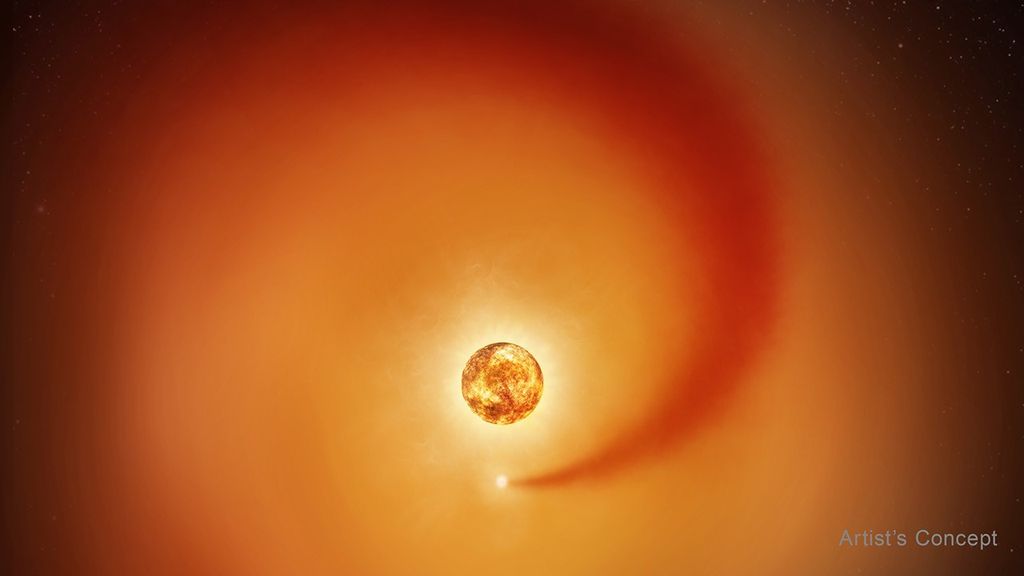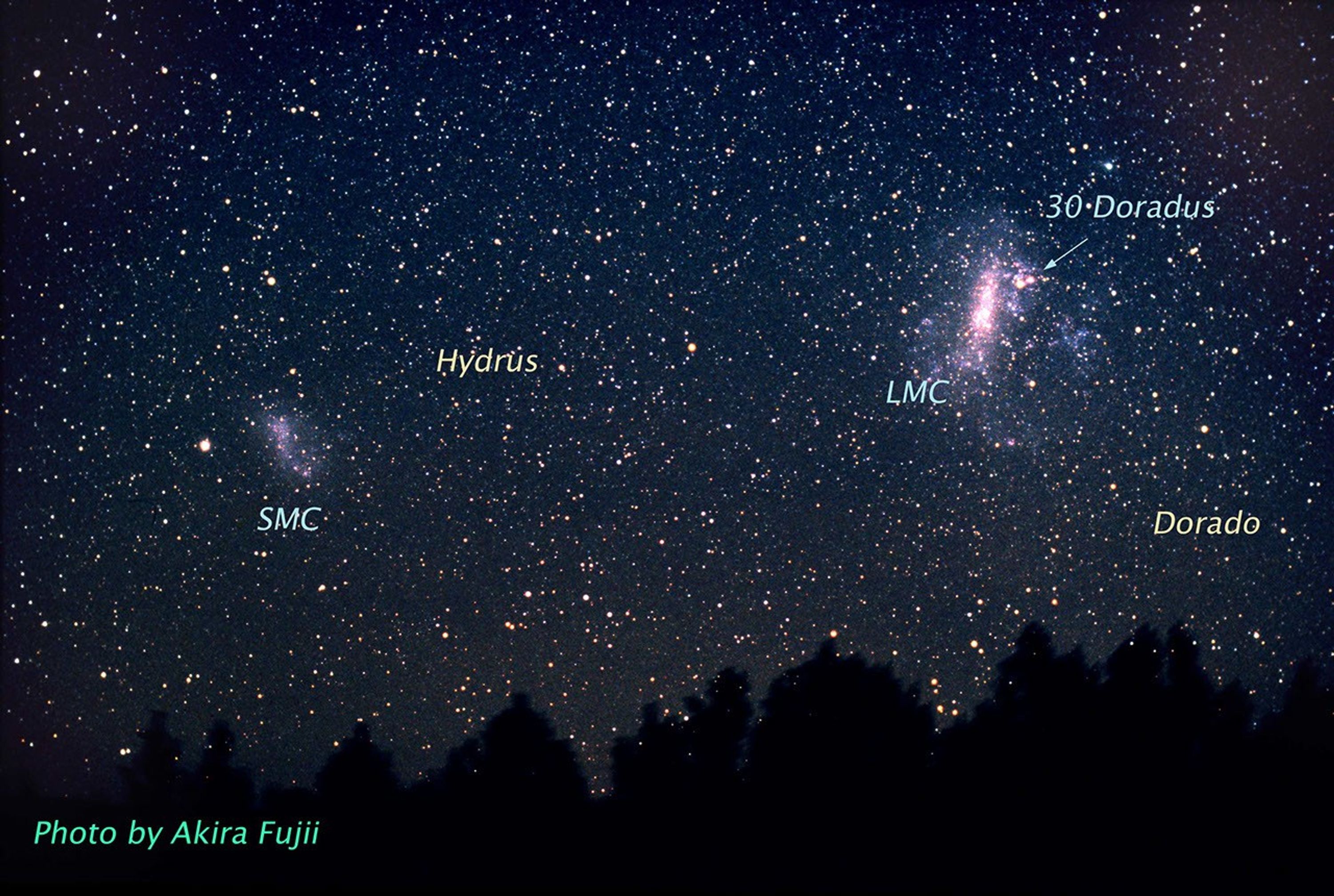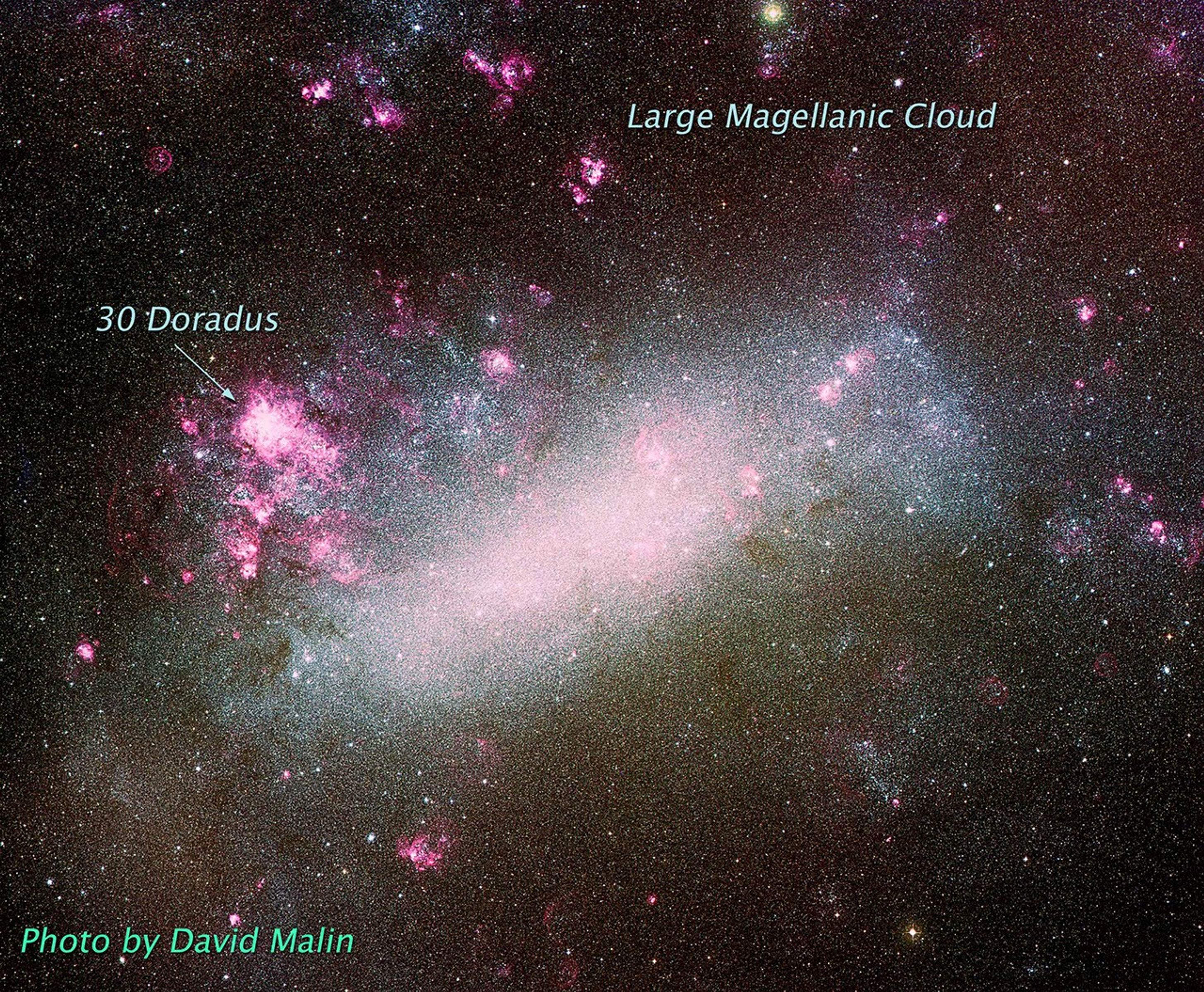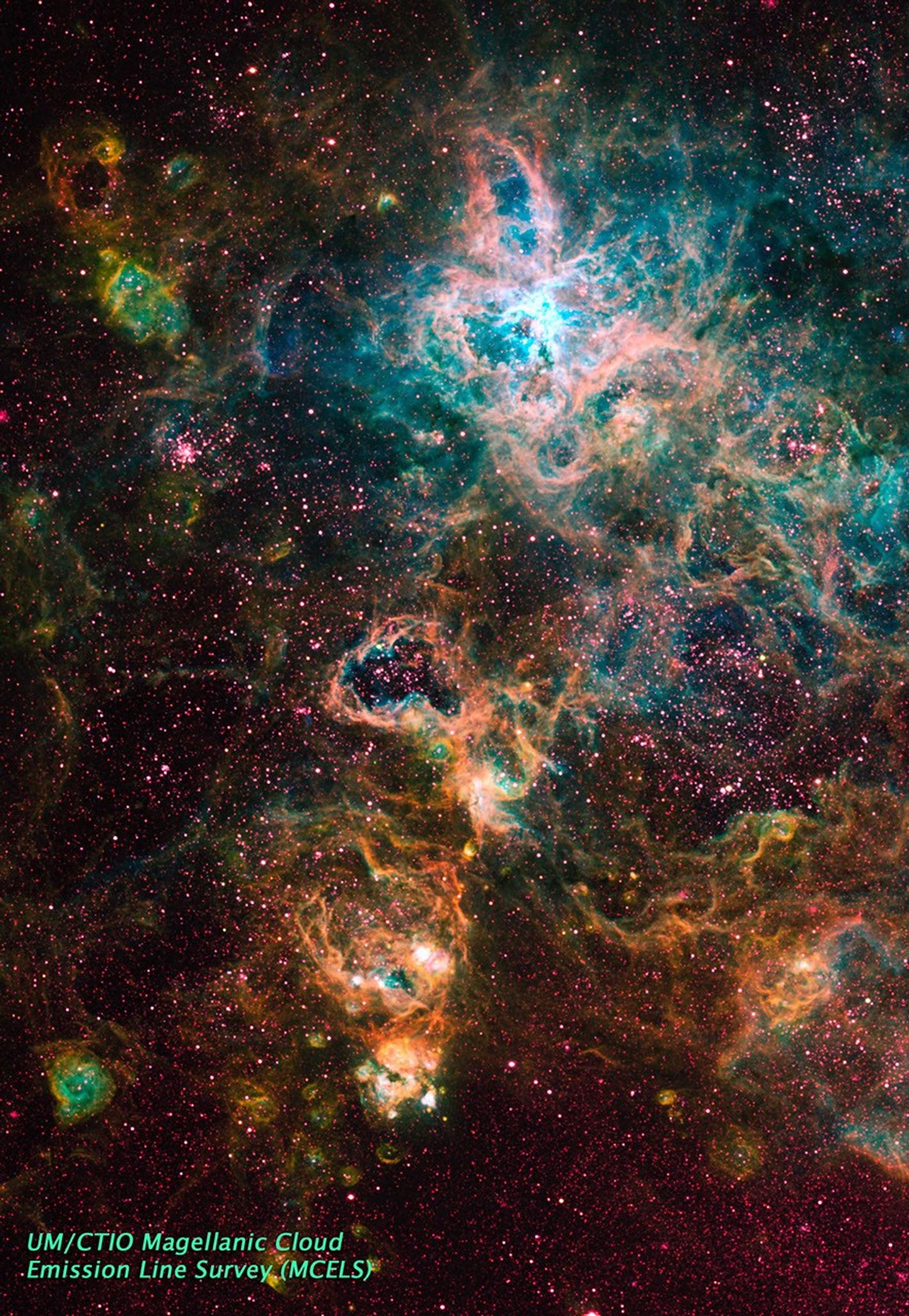1 min read
Hubble’s Grand View of Star Birth
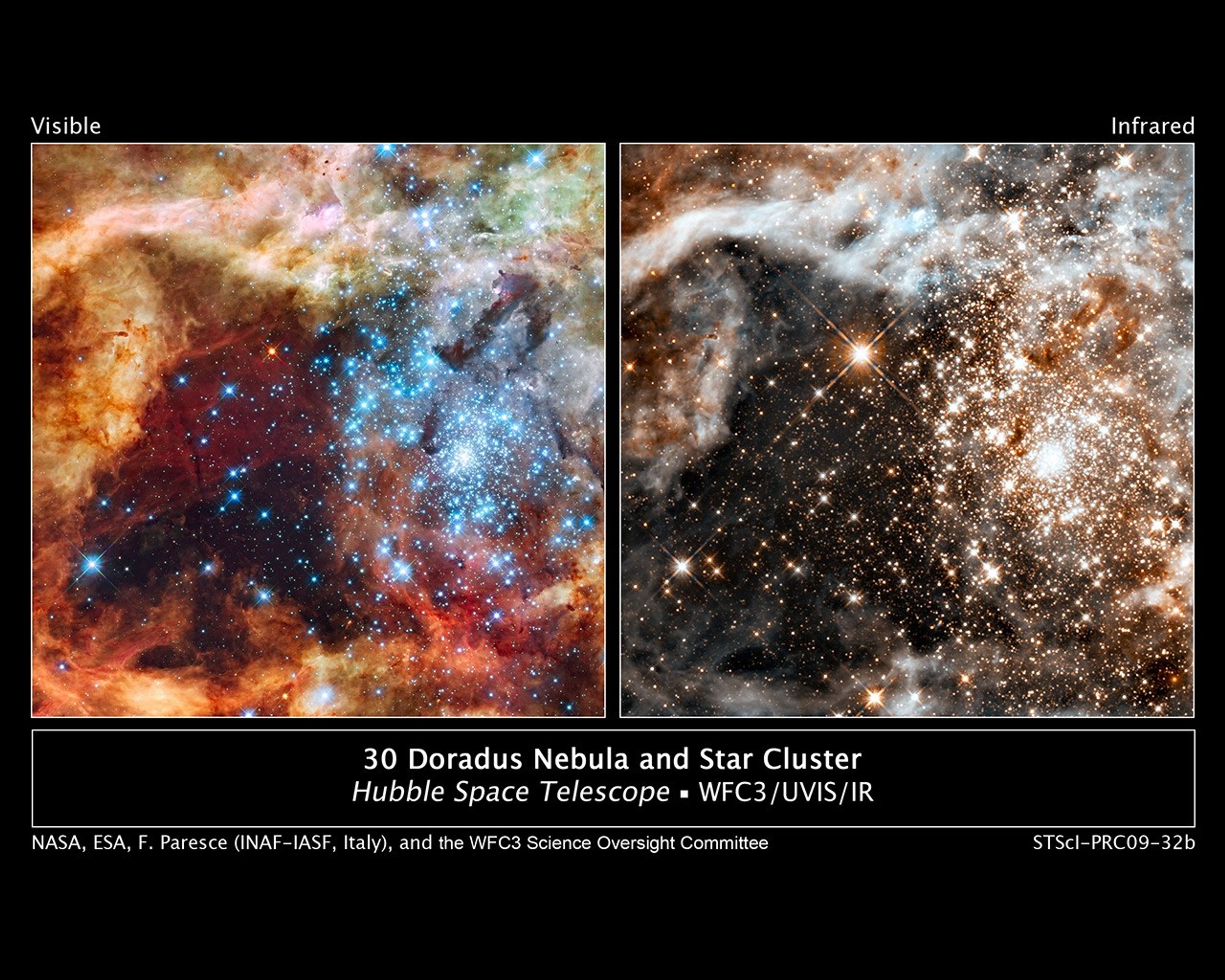
These two images, taken in visible and infrared light by the Wide Field Camera 3 aboard NASA's Hubble Space Telescope, reveal a massive star cluster nestled in the largest stellar nursery in our local galactic neighborhood.
The massive, young stellar grouping, called R136, is only a few million years old and resides in the 30 Doradus Nebula, a turbulent star-birth region in the Large Magellanic Cloud (LMC), a satellite galaxy of our Milky Way. The nebula is close enough to Earth that Hubble can resolve individual stars, giving astronomers important information about the stars' birth and evolution.
In the image at left, taken in ultraviolet, visible, and red light, the stars look like icy blue diamonds. The green in the nebula is from the glow of oxygen and the red is from fluorescing hydrogen.
In the image at right, taken at infrared wavelengths, Hubble sees through the dusty nebula, revealing many stars that cannot be seen in the visible-light view. The large bright star just above the center of the image is in 30 Doradus. The observation was taken through two infrared filters (1.1 microns and 1.6 microns).
The Hubble observations of 30 Doradus were made Oct. 20-27, 2009.
About the Object
- R.A. PositionR.A. PositionRight ascension – analogous to longitude – is one component of an object's position.05h 38m 42.36s
- Dec. PositionDec. PositionDeclination – analogous to latitude – is one component of an object's position.-69° 6' 3.24"
- ConstellationConstellationOne of 88 recognized regions of the celestial sphere in which the object appears.Dorado
- DistanceDistanceThe physical distance from Earth to the astronomical object. Distances within our solar system are usually measured in Astronomical Units (AU). Distances between stars are usually measured in light-years. Interstellar distances can also be measured in parsecs.170,000 light-years (52,000 parsecs)
About the Data
- Data DescriptionData DescriptionProposal: A description of the observations, their scientific justification, and the links to the data available in the science archive.
Science Team: The astronomers who planned the observations and analyzed the data. "PI" refers to the Principal Investigator.The image was created from Hubble data from proposal 11360: R. O'Connell (University of Virginia), B. Balick (University of Washington), H. Bond (STScI), D. Calzetti (University of Massachusetts), M. Carollo (Swiss Federal Institute of Technology, Zurich), M. Disney (University of Wales, College of Cardiff), M. Dopita (Australian National University), J. Frogel (Ohio State University Research Foundation), D. Hall (University of Hawaii), J. Holtzman (New Mexico State University), P. McCarthy (Carnegie Institution of Washington), F. Paresce (European Southern Observatory, Germany), A. Saha (NOAO/AURA), J. Silk (University of Oxford), A. Walker (NOAO/CTIO), B. Whitmore (STScI), R. Windhorst (Arizona State University), and E. Young (University of Arizona). - InstrumentInstrumentThe science instrument used to produce the data.HST>WFC3/UVIS (left), HST>WFC3/IR (right)
- Exposure DatesExposure DatesThe date(s) that the telescope made its observations and the total exposure time.October 20 - 27, 2009, Exposure Time: 11.7 hours (left), October 20 - 27, 2009, Exposure Time: 2.6 hours (right)
- FiltersFiltersThe camera filters that were used in the science observations.WFC3/UVIS (left): F336W (U), F438W (B), F555W (V), F656N (H-alpha), and F814W (I) WFC3/IR (right): F110W (J) and F160W (H)
- Object NameObject NameA name or catalog number that astronomers use to identify an astronomical object.30 Doradus, 30 Dor
- Object DescriptionObject DescriptionThe type of astronomical object.Nebula in the Large Magellanic Cloud
- Release DateDecember 15, 2009
- Science ReleaseHubble’s Festive View of a Grand Star-Forming Region
- Credit

The images are composites of separate exposures made by the WFC3 instrument on the Hubble Space Telescope. Five filters were used to sample broad and narrow wavelength ranges for the UVIS image. Two filters were used to sample broad wavelength ranges from the IR image. The colors result from assigning different hues (colors) to each monochromatic image. In this case, the assigned colors are: WFC3/UVIS Image Blue: F336W (U) and F438W (B) Green: F555W (V) Red: F814W (I) Orange/red: F656N (H-alpha) WFC3/IR Image Cyan: F110W (J) Orange: F160W (H)

Related Images & Videos

Hubble's Festive View of a Grand Star-Forming Region
Just in time for the holidays: a Hubble Space Telescope picture postcard of hundreds of brilliant blue stars wreathed by warm, glowing clouds. The festive portrait is the most detailed view of the largest stellar nursery in our local galactic neighborhood. The massive, young...

Hubble Observes the Large Magellanic Cloud's Star-Forming Region, 30 Doradus
The massive, young stellar grouping, called R136, is only a few million years old and resides in the 30 Doradus Nebula, a turbulent star-birth region in the Large Magellanic Cloud (LMC), a satellite galaxy of our Milky Way. Many of the stars are among the most massive known....
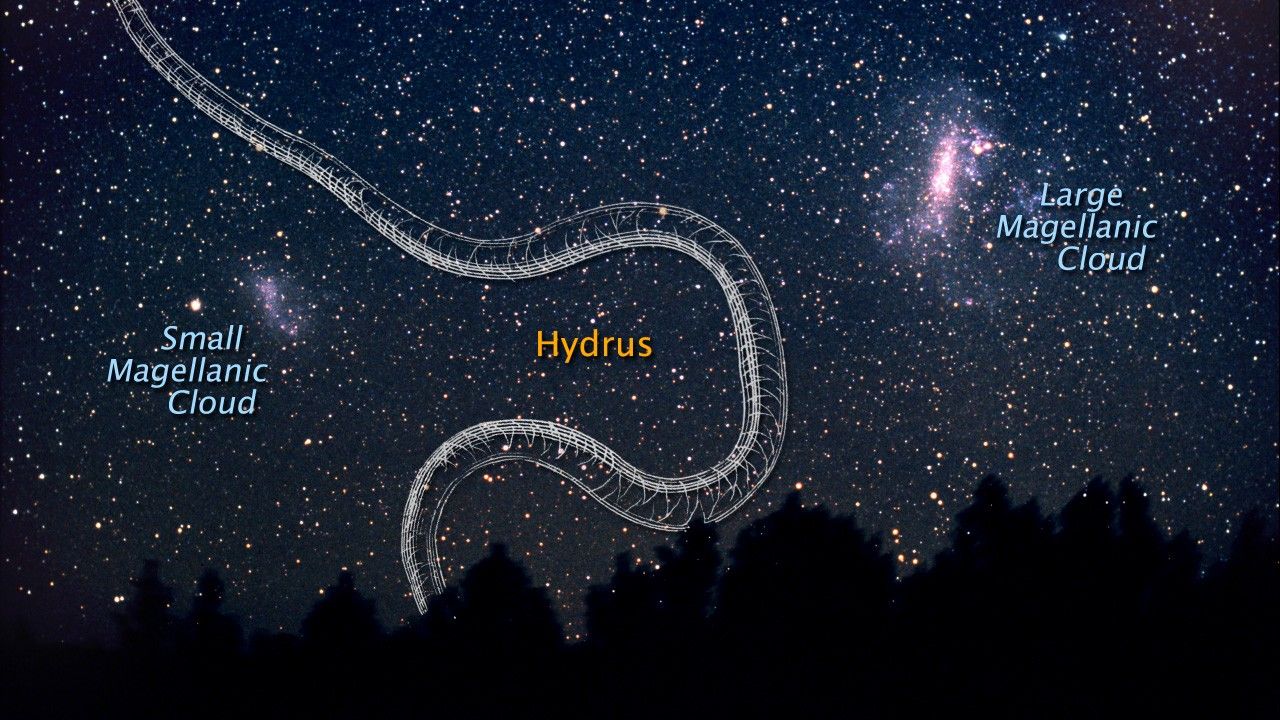
Hubble WFC3 30 Doradus Zoom (Narrated)
The nearest and most opulent stellar factory resides 170,000 light-years away in a turbulent star-birth region called 30 Doradus. Many of the diamond-like blue stars are among the hottest and most massive stars known. The brilliant stars are unleashing a torrent of ultraviolet...
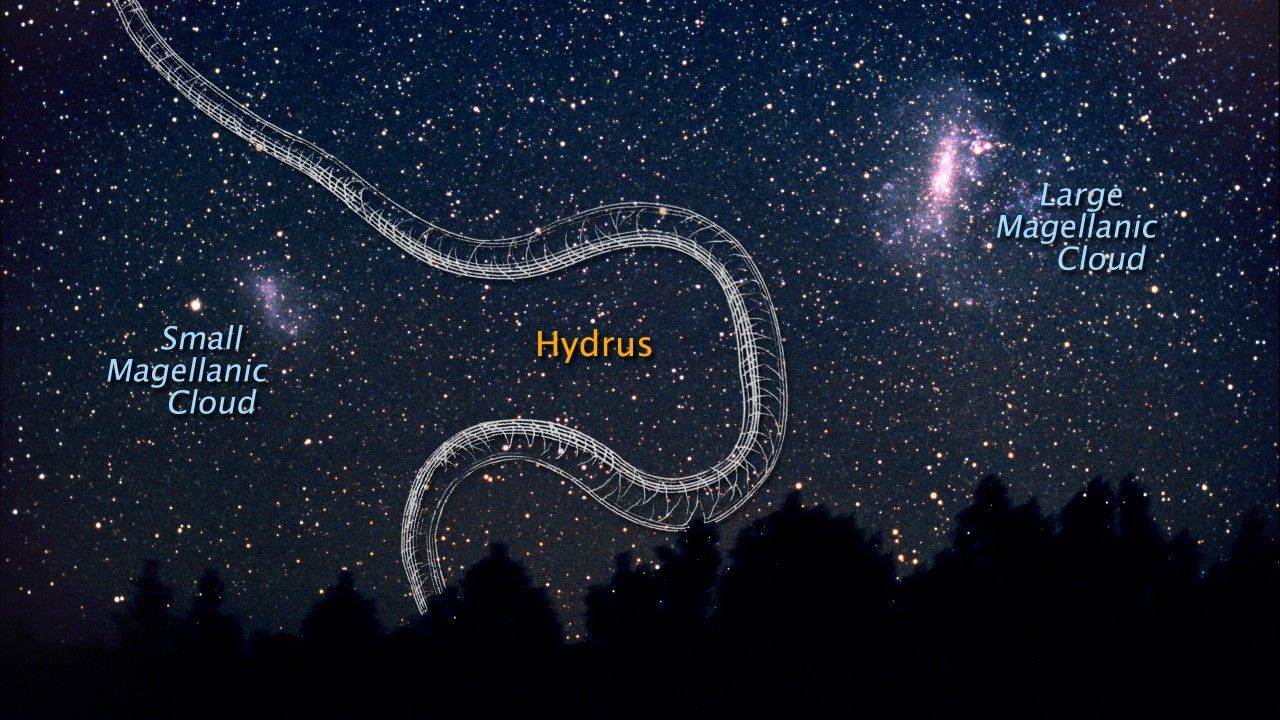
Hubble WFC3 30 Doradus Zoom (Unnarrated)
The nearest and most opulent stellar factory resides 170,000 light-years away in a turbulent star-birth region called 30 Doradus. Many of the diamond-like blue stars are among the hottest and most massive stars known. The brilliant stars are unleashing a torrent of ultraviolet...
Share
Details
Claire Andreoli
NASA’s Goddard Space Flight Center
Greenbelt, Maryland
claire.andreoli@nasa.gov





